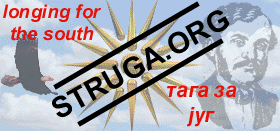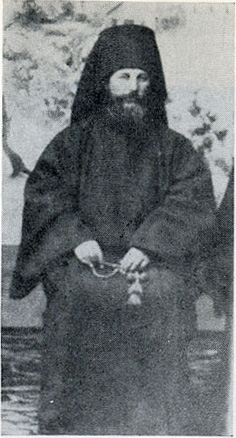
 |
Krstan Sandjak (Kalistrat Zografski) (1830(?)-1914) |

Kalistrat Zografski of Struga, whose secular name was Krstan Sandzak, proves to have been an extremely interesting and significant personality in the sphere of Macedonian culture in the last decades of the 19th and the beginning of the 20th century. A teacher of Greek in Struga and a musician of the school of Naum Miladin, Krstan Sandzak carried on his activity as a religious figure in the Zograf Monastery at Mount Athos. Sandzak, who took on the monastic name of Kalistrat Zografski and who was a man of wide general culture, developed a very fruitful translating activity at Mount Athos.
His knowledge of classical Greek, modern Greek, Rumanian and Church Slavonic enabled him to translate from the Hellenic many services of Ss. Clement and Naum of Ohrid, the Ss. Sedmocislenici and others and also a large number of religious chants from Rumanian and Greek into Church Slavonic. Most significant of all, however, are his musical works, written down in neumatic notation and printed in an edition brought out by the Zograf Monastery, and his works concerning the theory of music. In the works of Kalistrat we can feel certain strains of Struga town songs and also from th century Russian sacred music, although basically they belong to the Byzanitne and Slavonic musical tradition of Macedonia. As a good theorist Kalistrat Zografski succeeded in transcribing several of Jovan Kukuzel's works from the exceedingly complicated neo Byzantine notation into the Christian neumatic notation, thus making possible a live contact with the works of one of the greatest masters of Byzantine music, a man who was by origin a Macedonian.